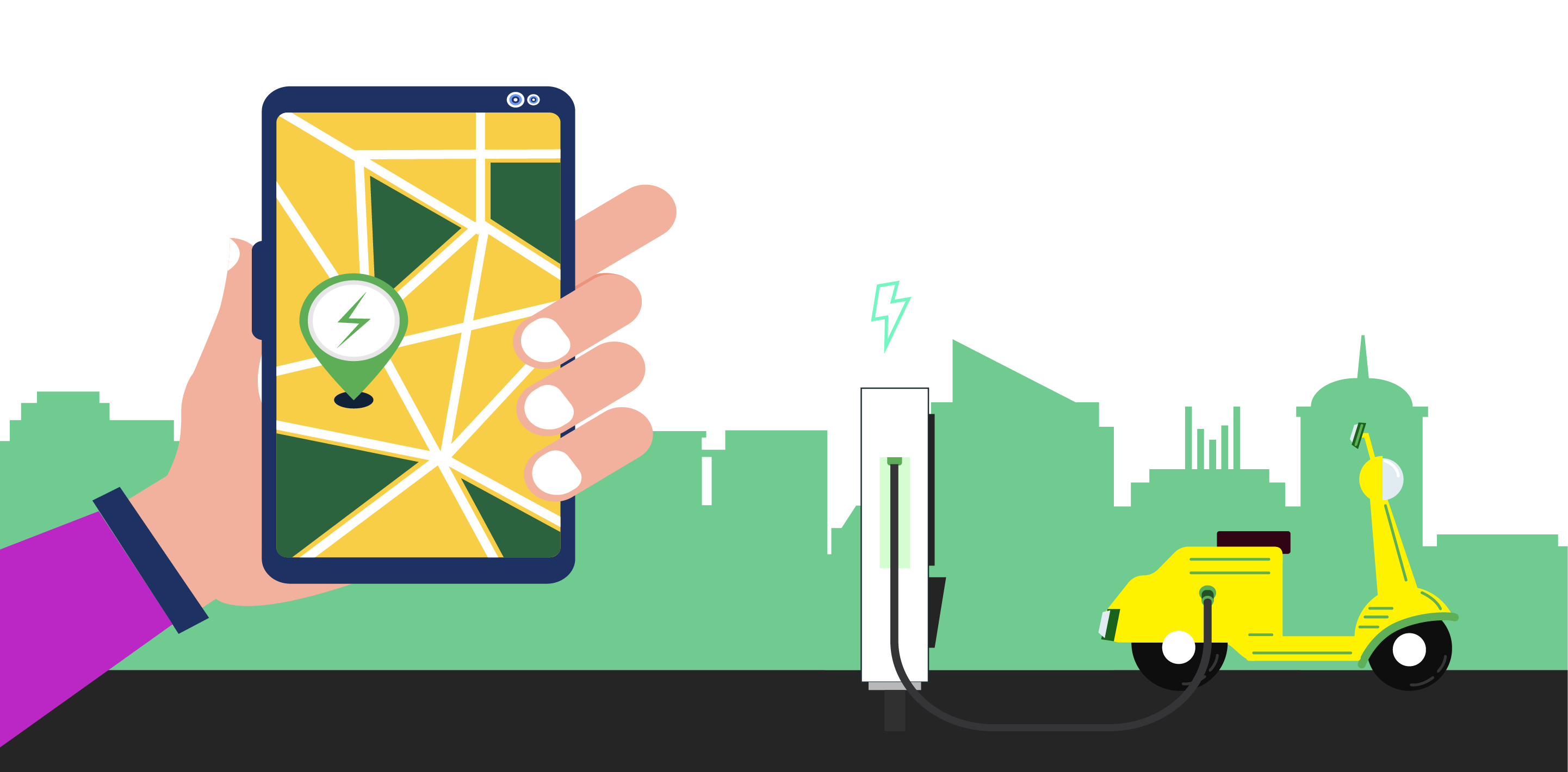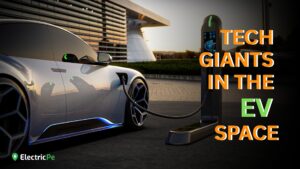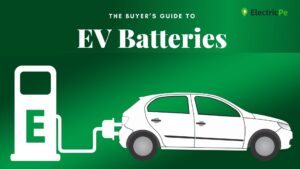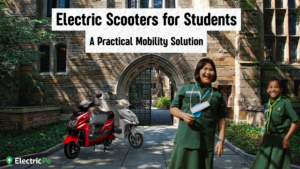Locating an ideal charging point is essential to keeping your electric vehicle on the road in India’s ever-changing EV market. The need for effective charging infrastructure is greater than ever due to the growing popularity of EVs. The Indian government, working together with other public and private entities, appears to be actively pushing the setting up of charging points in urban centers, highways, and commercial areas. The EV charging station displays the connector position, ensuring a seamless and efficient charging experience for electric vehicle owners. This strategic initiative intends to reduce range anxiety among EV users, promoting more people to shift to electric vehicles. In this article, we’ll look at the significance of EV charging points, how to find them, and the tools available to make the process as simple as possible.
1. What Role do Electric Charging Station Locators Play in the EV Ecosystem?
Electric charging point locators play a crucial role in the electric vehicle (EV) ecosystem by providing users with information about the locations of charging points. Here are some key aspects of their role:
- Accessibility and Convenience: Charging point locators help EV owners find charging stations easily, making it more convenient for users to plan their routes and ensure they have access to charging infrastructure when needed.
- Range Anxiety Mitigation: Range anxiety, the fear of running out of battery power before reaching a charging station, is a common concern among EV owners. Charging station locators help alleviate this anxiety by providing real-time information on the nearest available charging options.
- Trip Planning: EV charging station locators often include features that allow users to plan their trips based on the availability of charging infrastructure near them. This can include estimating the required charging stops, charging times, and optimal routes.
- Information on Charging Speed and Compatibility: Locators provide details about the charging speed and compatibility of each point, allowing users to choose points that best match their needs. This information is crucial for users who may be in a hurry or require a specific charging standard.
- Real-Time Status Updates: Many charging station locators provide real-time status updates, indicating whether a charging point is currently in use or available. This information helps users make informed decisions on where to charge their vehicles.
- Promotion of EV Adoption: By ensuring easy access to charging infrastructure, locators contribute to the overall promotion of EV adoption. As more users become confident in the availability of charging options, they are more likely to consider and choose electric vehicles.
In summary, electric charging point locators play a vital role in supporting the growth and adoption of electric vehicles by addressing concerns related to accessibility, convenience, and range anxiety, ultimately contributing to the development of a robust EV ecosystem.
2. What is the Aim of the Charging Stations?
In the quest for sustainable and eco-friendly transportation, electric vehicles have emerged as a frontrunner. However, to keep these vehicles running, a reliable network of charging points is crucial. Imagine being in the middle of busy streets, and your EV’s battery is running low. The ability to quickly locate a charging station can make or break your journey.
Charging points, particularly in the context of electric vehicles (EVs), have the primary aim of supplying power to recharge the batteries of these devices.
- It provides a convenient and accessible location for electric vehicle owners to recharge their vehicles, allowing them to extend their driving range and promote the use of electric vehicles.
- Some charging points are equipped with smart technology to optimize energy consumption, allowing for better integration with the power grid. This helps manage electricity demand more efficiently and can reduce peak load on the grid.
- EV Charging Infrastructure contributes to the development of a robust charging infrastructure, addressing concerns about “range anxiety” and supporting the growth of electric vehicle adoption.
The aim of charging points is multifaceted, encompassing convenience, sustainability, grid integration, and economic considerations, all geared towards supporting the growth of electric scooters and cars while addressing environmental and energy-related challenges.
3. EV Charging Points: The Heart of EV Mobility in India
- Level 1 charging:
- Power Source: Level 1 chargers typically use a standard 120-volt AC household outlet.
- Charging Speed: These are the slow chargers and are suitable for overnight charging.
- Operation: Users simply plug their vehicle into the standard electrical outlet using the charging cable that comes with the EV.
- Level 2 charging:
- Power Source: Level 2 chargers use 240-volt AC power.
- Charging Speed: Faster than Level 1 charging, Level 2 charging is suitable for home charging or public charging stations.
- Operation: Users plug their vehicle into the Level 2 charging station using a dedicated charging cable. Some Level 2 stations may require authentication, often through a mobile app or RFID card, and then the charging process begins.
- DC Fast Charging (Level 3):
- Power Source: DC fast chargers use direct current (DC) and require a higher-voltage power supply, typically 480 volts or more.
- Charging Speed: This is the fastest charging option and is designed for quick charging, typically providing an 80% charge in 30 minutes or less.
- Operation: Users connect their vehicle to the fast charger using a specialized DC charging cable. These stations often require authentication through a mobile app or RFID card, and the charging process starts after authentication.
- Wireless Charging:
- Power Source: Wireless charging uses electromagnetic fields to transfer energy from a charging pad to the vehicle without the need for physical cables.
- Charging Speed: Typically slower than DC fast charging but faster than Level 1 charging.
- Operation: Users park their EV over a wireless charging pad, and the charging process begins automatically. Wireless charging is still less common than traditional plug-in charging points.
- Payment and authentication:
- Many public charging points require users to authenticate their identity and payment information before initiating the charging process. This can be done through mobile apps, RFID cards, or other methods.
4. India's Leading EV Charging Station App: ElectricPe
ElectricPe is India’s leading EV charging platform. ElectricPe wants to provide a simple and convenient experience for anyone interested in switching to electric vehicles and contributing to a greener tomorrow. Fleet owners, housing societies, shops, institutes, workplaces, residential spaces, and co-working spaces can now simply manage their charging infrastructure and monitor consumption via its virtual and physical mobility centers located around Bangalore, encouraging sustainability more than ever.
What does ElectricPe provide?
Until today, the shortage of charging stations near customers has left millions of potential users with ‘Range Anxiety,’ eliminating the clean air. ElectricPe is on a mission to offer smart, affordable, and clean electric mobility to a billion Indians. ElectricPe’s charging station surpasses Tata Power with superior efficiency and advanced features for all things electric. You can download the ElectricPe App for convenient and efficient EV charging solutions.
ElectricPe Makes EV Charging Easy!
SCAN
Use our application to locate the nearest charging station and scan the QR code.
CHARGE
After setting the battery level, start charging the vehicle. Moreover, take comfort in the app's real-time EV charging updates.
PAY
Pay only for what you consume with your wallet account.
To enjoy a flawless EV experience, download the app now!
5. India's EV Charging Network: Current Status in EV Business and Government Incentives
Electric vehicle (EV) charging infrastructure in India was gradually expanding, with both government and private up-to-date initiatives playing a role in its development.
Current Status of the EV Charging Stations in India:
- Government Initiatives: The Indian government has been actively promoting electric mobility as part of its efforts to reduce air pollution and dependence on fossil fuels. The Faster Adoption and Manufacturing of Hybrid and Electric Vehicles (FAME) scheme has been in place to incentivize the adoption of electric vehicles and the development of charging infrastructure.
- Public and private entities have been arranging resources and investing in the development of EV charging stations across the country. Charging points are being deployed in strategic locations, including commercial areas, highways, and parking lots.
- Private Sector Involvement: Private companies, including startups and established players, are contributing to the growth of the EV charging network. With a more effective and extensive expansion of charging stations, India’s charging infrastructure aspires to exceed the charging stations in the United States. Some companies are focusing on setting up fast-charging stations to reduce charging time and improve the overall convenience for EV users.
Government EV Incentives:
- FAME Scheme: This program offers financial incentives to encourage the use of electric vehicles like scooters, cars, and buses and the construction of infrastructure to support them. It offers incentives to EV producers, consumers, and suppliers of charging infrastructure.
- The policy proposes the establishment of charging infrastructure, whereby about 2700 charging stations will be established in metros and other million-plus cities across the country so that there will be the availability of at least one charging station in a grid of 3 km x 3 km. This makes it easy for users to locate EVs.
- Expanding the EV Charging Network:
- Under Phase-I, 520 charging stations and infrastructure were sanctioned.
- Phase-II: Sanctioning of 2,877 electric vehicle charging stations in 68 cities across 25 states and UTs and 1,576 charging stations across 9 expressways and 16 highways.
- Capital Subsidy for OMCs: Rs. 800 crore sanctioned for the establishment of 7,432 electric vehicle public charging stations.
- GST on charging stations for EVs was reduced from 18% to 5%.
- GST Reduction: The Goods and Services Tax (GST) on electric vehicles and charging equipment has been cut to encourage their affordability
- State-level incentives: Some Indian governments provide additional incentives such as subsidies, deductions, and refunds to encourage the adoption of electric vehicles
- Income Tax Benefits: Individuals who purchase electric vehicles may be eligible for income tax breaks under certain circumstances.
- Customs Duty Reduction: To encourage domestic production, customs duties on parts used in the construction of electric vehicles have been reduced.
6. Charging Challenges: Addressing Range Anxiety
The charging infrastructure plays a pivotal role in addressing and alleviating range anxiety, a common concern for electric vehicle (EV) owners, whether they own scooters or electric cars. To mitigate this apprehension, a widespread and efficient network of charging stations must be established, ensuring comprehensive coverage along popular travel routes and within urban areas. The deployment of fast-charging technologies is crucial, as it significantly reduces the time required to recharge EV batteries, making it more convenient for drivers on the go. Additionally, integrating smart technologies into the charging infrastructure can provide real-time information on charging station availability, allowing users to plan their routes and stops effectively. When seeking advice on range anxiety issues, consult with an ElectricPe expert who is able to find efficient EV charging solutions that occupy minimal time and resources. So by continually enhancing the charging infrastructure, the EV ecosystem can effectively address range anxiety, promote the widespread adoption of electric vehicles, and contribute to a sustainable transportation future.
7. Environmental Impact of EV Charging Points
Electric Vehicle (EV) charging stations contribute to several positive environmental phases, playing a crucial role in the transition to sustainable transportation. Here are some of the key environmental benefits associated with EV charging stations:
- Reduced Greenhouse Gas Emissions:
- EVs produce lower or zero tailpipe emissions compared to traditional internal combustion engine vehicles. By promoting the use of electric vehicles through charging infrastructure, the overall greenhouse gas emissions from the transportation sector can be significantly reduced.
- Improved Air Quality:
- EVs do not emit pollutants directly, leading to improved air quality in urban areas.
- Encouraging Renewable Energy Integration:
- The growth of EV charging infrastructure provides an opportunity to integrate more renewable energy sources into the power grid. By aligning the deployment of charging points with renewable energy generation, it is possible to reduce the overall carbon footprint of the transportation sector.
- Energy Efficiency:
- Electric vehicles are generally more energy-efficient than traditional vehicles with internal combustion engines. The process of converting electricity to vehicle motion is more efficient than the combustion of fossil fuels in an engine. The charging network seamlessly connects electric vehicles to power sources, acting as a vital filter for efficient and sustainable energy distribution.
- Reduced Noise Pollution:
- EVs are generally quieter than petrol vehicles, contributing to reduced noise pollution in urban and suburban environments
- Decreased Reliance on Oil:
- As the adoption of EVs and charging infrastructure increases, there is a corresponding decrease in the dependence on oil for transportation.
- Promoting Sustainable Urban Planning:
- The deployment of EV charging stations can influence urban planning strategies, encouraging the development of sustainable and pedestrian-friendly city designs. This shift can lead to reduced traffic congestion, increased use of public transportation according to charging maps, and a more efficient use of urban spaces.
Electric Vehicles + Charging Stations = Greener Environment
Download the ElectricPe app for easy and seamless EV charging and save money with its 1-year free charging, refer and earn, subscription plans, and many more incentives designed to make India an EV nation.





